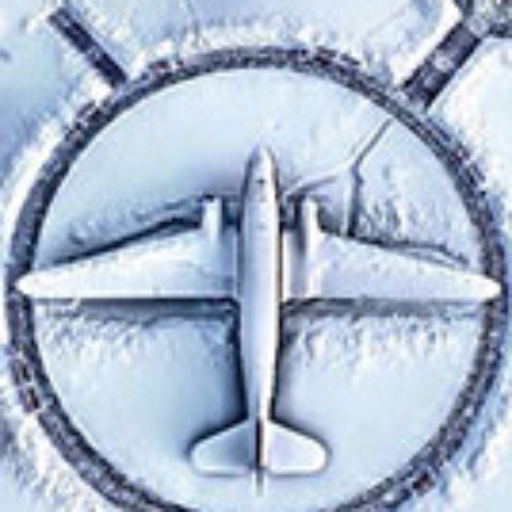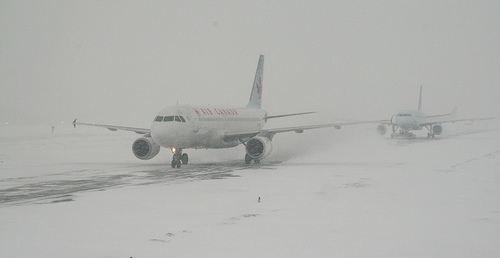Snow Storm Runaway: Real Life Flying
Your aircraft is blowing away! What would you do?
In my early years of flying, I was a Senior Captain on Fokker F27 aircraft carrying out Airborne Laser and Magnetometer Oil Exploration missions in coastal waters all over the world.
We had 3 F27s which had to be flown from the UK to Toronto Pearson airport to fit the laser and magnetometers, plus a major cockpit upgrade to include FMS, Digital Glass Displays and INS/RADAL driven ILS indicators either side of the windscreen centre divider. This was all needed to support VERY accurate tracking and altitude at exactly 300′ RADALT.
The Mission
I was tasked with the ferry flight from Maastricht in Holland to Toronto via Glasgow, Reykjavik, Narsarsuaq and Goose Bay.
We had an excellent engineer assisting with turnarounds and refuelling but a relatively green first officer who had not flown outside Canada before.
Arrival in Narsarsuaq
We arrived in Narsarsuaq on the west coast of Greenland in late afternoon under very dark foreboding skies, a falling QNH and light snow.
The runway is at the end of a fjord and uphill was covered with a layer of compacted snow and ice, however the airport gritted the surface and so braking was reasonably good.
There is a large sloping tarmac with tall light poles and we parked under these to complete refuelling the aircraft before heading to our hotel for the night.
It was impossible to tie the aircraft down due to the compacted ice but we used chocks and sand bags around the 3 gear legs and parked her nose down the slope as the wind was blowing strongly from that direction
The forecast was for “a drop in pressure to 970mb odd and strong wings overnight.” Understatement!!!
The Runaway
At about 0400 hours the next morning I was shaken awake by the engineer to a howling gale and snow storm. The tower controller had been up earlier and switched on all I arrived on the tarmac to find 100kph winds that were so strong that they had spun the F27 around and it was now facing up hill and away from all the chocks. More alarmingly the winds were lifting the wing so that the aircraft was rising and falling on its oleos to the point of practically becoming airborne!
Since this aircraft had pneumatic brakes, the cold (well below zero) had hardened the seals and allowed pressure to escape meaning that the park brake was useless. Eddie, the engineer, suggested I start the engines and then try to hold the aircraft in position with power,
Unfortunately the forward entry door had a combination style padlock and with gloves on it was impossible to feel or see the number to release it. The aircraft was by now rocking up and down wildly and the nosewheel had castored around and was facing backwards.
As I struggled with the lock, Eddie ran to a hangar to get bolt cutters but before he could get back, the F27 began rolling tail first down the slope. I tried to hang on but the nose was thrashing from side to side, taking me with it. I fell to the ground and watched in despair as the aircraft gathered speed and disappeared down the ramp into the blowing snow.
As we chased after the aircraft we were continually blown off our feet. It was impossible to stand with the combination of wind, ice and snow so we eventually slid on a rear ends for 100 meters to the bottom of the tarmac where we eventually found the aircraft sitting tail first in a deep snow drift.
She was still trying to fly in the blizzard but was stuck fast in a meter of snow and very luckily, undamaged. We were lucky that the MAD sting had not been fitted to the tail yet as we would surely have lost it!
Recovery
Getting her out of the snow was another story! It took two very large four wheel drive tractors to pull her out of the drift and tow her back up the slope against the wind.
An incredible experience and one we were lucky to come out of with no damage. The storm really was extreme and I later heard that the barometric pressure dropped below 970mb. Unheard of!



